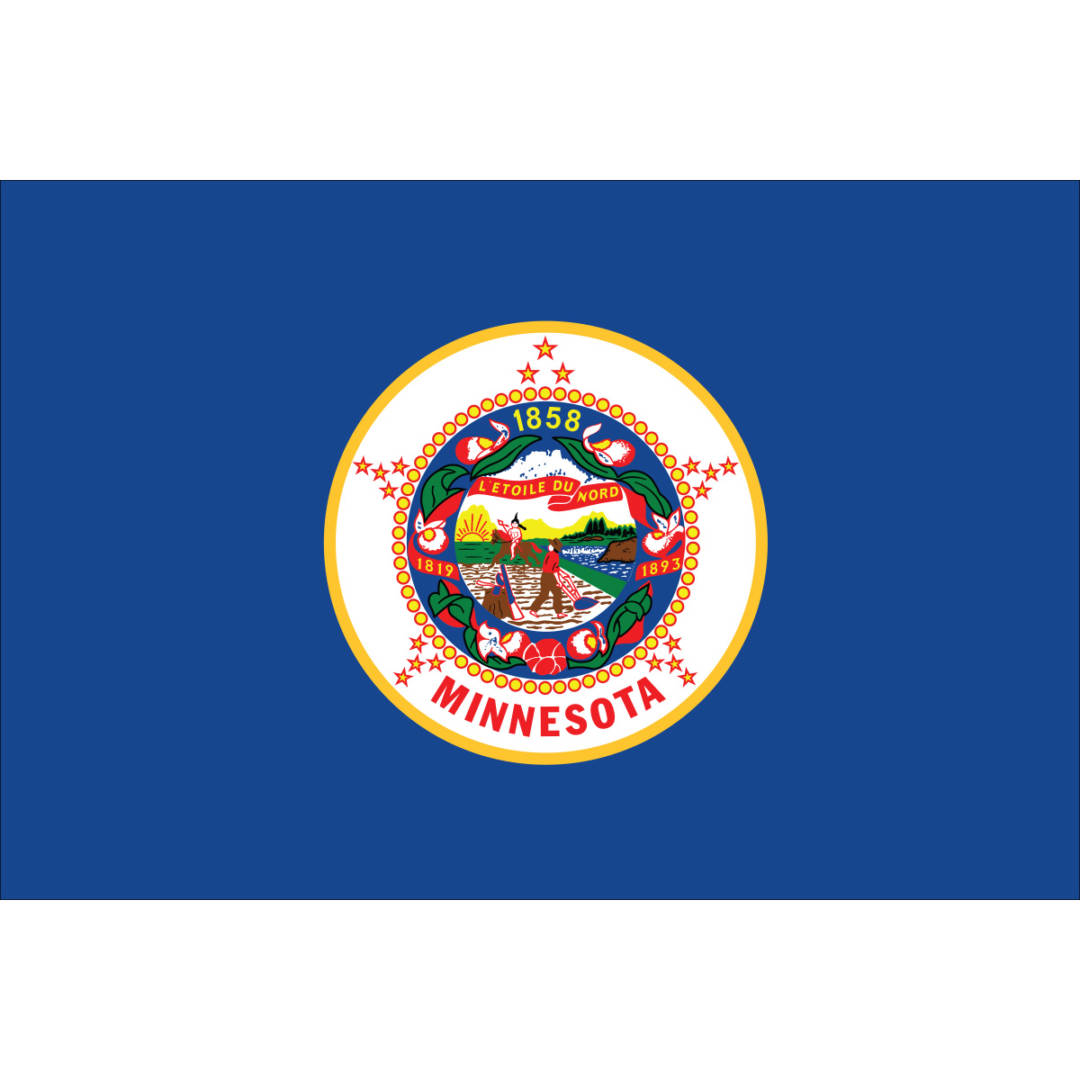A novel high school class called Partnership for New Americans pairs newcomer ELL students with mainstream students resulting in a peer support arrangement that facilitates newcomers’ transitions into American school life and promotes cultural sensitivity among mainstream students.
Adjusting to life in the United States presents a multitude of unique challenges for newcomer adolescents. Entering a new school with its own organizational systems, colloquial language, school culture, daily routines, and usual customs can be one of the hardest challenges these teenagers face. At Davies High School in Fargo, North Dakota, these challenges are addressed through a novel class called Partnership for New Americans where newcomer English Learners (ELs) are paired with mainstream peers who are proficient in English. The resulting peer support arrangement benefits both ELs and mainstream students. The purpose of this article is to describe this innovative class and to offer some recommendations to other educators interested in pursuing a similar approach to ease the acculturation of newcomers.
Social Inclusion
What began as a conversation between an ESL teacher and a school counselor quickly turned into a starting point for a new class. Teachers, counselors, and school administration were all in agreement that there was a need for a smoother transition for ELs to integrate into the school setting. A social inclusion class that successfully paired special education students with mainstream students was already in place at Davies High School. Could a parallel class be designed to pair ELL students with mainstream students?
Research literature about peer support arrangements targeting social inclusion of ELs is scant, but Kilman (2009) reports that a number of U.S. schools have launched initiatives to improve EL social inclusion by increasing interactions between ELs and English-proficient peers through classroom activities that foster peer interdependence, school-wide programs, after-school clubs, and cross-cultural school trips. American peer friendships have been found to contribute to a greater sense of school belonging among adolescent refugees (Trickett & Birman, 2005). Further, second language studies examining sociocultural dimensions of language acquisition have pointed to the importance of peers and peer scaffolding (Carhill, Suárez–Orozco, & Páez, 2008; Swain & Lapkin, 1998; Ohta, 2000). For instance, Carhill-Poza (2015) found that linguistic peer support while collaborating on academic tasks contributed to academic English proficiency of adolescent Spanish-speakers beyond individual predictors of second-language acquisition, including time in the United States and maternal education. Classroom-based opportunities for interactions with mainstream peers who are proficient in English have contributed to improved English language skills among ELs (Mehan, Hubbard, Lintz, & Villanueva, 1994) and have resulted in increased American acculturation that has been correlated with higher grades and greater school attachment (Wood & Clay, 1996; Trickett & Birman, 2005).
While few studies have examined the benefits of social interactions between ELs and mainstream peers at school, a separate body of research focused on a different population of students may offer some potentially valuable insights about the use of peer-mediated social interactions in secondary school settings. Multiple research studies have demonstrated the effectiveness of pairing students with and without disabilities in peer support arrangements aimed at increasing social inclusion of adolescents with disabilities (e.g. Brock, Biggs, Carter, Catey, & Raley, 2016; Carter et al., 2016; Mpofu, 2003; Carter, Sisco, Melekoglu, & Kurkowski, 2007). Such peer support arrangements benefit not only the students with special needs but also their mainstream peers (Carter, Moss, Hoffman, Chung, & Sisco, 2011; Cushing & Kennedy, 1997). At Davies High School, educators decided to draw on an existing course model designed for social inclusion of special education students to invent a new class named Partnership for New Americans.
From Pilot to Regularly Scheduled Class
The new class was piloted in 2014-15 as an overload added to the regular teaching schedule of one of the authors. Observational and anecdotal data collected during the pilot were shared with school board members, as well as the school district’s superintendent and assistant superintendents, who were all invited to visit the classroom and observe instruction. After the first year, it became apparent that this class provided many compelling benefits not only for ELL students, but also for the mainstream population. Partnership for New Americans was then picked up as a regularly scheduled class and will continue to be offered in the years ahead. In 2016-17, the class is starting its third year of implementation at Davies High School and is expanding to another high school within the district of Fargo Public Schools.
Course Design
WIDA’s English Language Proficiency (ELP) Standards reflect the social and academic language needed and used by ELs for success at school; each of the five ELP standards targets a different language acquisition context: social and instructional settings, language arts, mathematics, science, and social studies (WIDA, 2007). The curriculum of Partnership for New Americans focuses on the development of social and instructional language and thus course design is based on WIDA’s corresponding ELP standard. Further, example topics offered in WIDA’s resource guide for ELP standards (WIDA, 2007) have been instrumental in curricular decisions pertaining topic selection. Table 1 provides an outline of course topics and associated assessment products generated through learning activities.
One of the first topics that is addressed in the course is the “Places and Faces” of Davies High School. Student pairs are sent out into the school building with a list of critical places and faces to locate and identify. With the guidance of their mainstream partners, students learn the names and locations of various places in the school building such as the cafeteria, library, and auditorium. Students also learn the names and faces of the critical staff members within the building such as the school nurse, principals, and attendance personnel. This topic addresses components of school life, use of register, identifying resources, and social interaction.
Overall, Partnership for New Americans provides an introduction to school life in the United States and fosters cultural sensitivity. The course is scheduled in tandem with a special education social inclusion course so that mainstream students are paired with newcomer ELL peers for one quarter and special education peers for the other. All activities are completed as a partnership between the newcomer EL students and their English-proficient partners. While the teacher designs and initially teaches the activities, the student partners are responsible for carrying out the activities and providing feedback to their peers and to the teacher.
Table 1. Course Outline for Partnership for New Americans
| Quarter | Topics | Products and Assessments |
| 1 | Locker combinations, binder organization and Daily Planner, weekly calendars, appropriate use policy, school locations and staff names, Labor Day, classroom objects, common classroom commands and questions, likes and dislikes, oral presentation skills, Halloween. |
|
| 2 | Communication Topics: giving directions, talking on the phone, shopping, banking, traveling, composing a postcard, and giving and taking surveys. Veteran’s Day, Thanksgiving, New Year’s, Winter Vocabulary, and preparing for final exams. |
|
| 3 | Study Skills and Strategies for Success at School: identifying strengths, goal setting, time and stress management, learning styles, note taking, and test taking. Valentine’s Day and St. Patrick’s Day. |
|
| 4 | Career planning and research, job applications, workplace vocabulary, home country research, identifying social and cultural traditions and values, Spring Vocabulary, Easter, April Fool’s Day. |
|
Widespread Benefits
The benefits from the course are felt by newcomer ELs, mainstream students, teachers, and the school as a whole. Newcomer ELs acclimate more quickly into the school system, their ability to advocate for their needs increases, and they discover American culture through new friendships that otherwise may not have had the chance to form. Mainstream students are exposed to people from new cultures, learn empathy towards the challenges faced by new Americans, and enhance their own language and mentoring skills. ESL teachers who have taught this course found that they were able to cover more material per class period and observed faster and deeper language development. As the building actively sought to improve school climate, it was found that this course had a positive impact in terms of developing interpersonal relationships, increasing cultural sensitivity, and creating awareness of the unique needs of newcomer ELs.
Recommendations for Success
Four key insights gained through the experience of designing, developing, and implementing Partnership for New Americans are discussed below. Recommendations are offered with regards to managing social dynamics, coordinating the teacher and student roles, addressing scheduling matters, and advocating for the inception of the course. Further, links to some useful instructional planning resources are provided.
Team Building
One of the most critical factors influencing the degree of success for the Partnership for New Americans course is the social dynamics within each paired team. A respectful, supportive, and safe relationship is essential for partners to learn from each other. Rather than randomly assigning pairs on the first day of the course, waiting a few days to get to know students first can yield long-term benefits. Icebreaker games and other team building activities that put students at ease during the early days of the course can also reveal helpful insights into student backgrounds, personalities, learning preferences, and other traits useful for the teacher to consider when pairing students.
Paying particular attention to students’ personality types such as introversion and extroversion can be especially important. For example, a highly outgoing student could inadvertently enable a very shy partner to withdraw from participation, resulting in a poor match. Monitoring the compatibility between partners can permit the teacher to help smooth out friction before conflict arises, or to intercede if changing a match becomes necessary. While team building activities are particularly valuable in the beginning, they are an important asset worth incorporating regularly throughout the duration of the course.
The Teacher’s Role
A key feature of the Partnership for New Americans course is its student-centered, interactive, participatory character. Course outcomes are achieved primarily through student engagement in learning activities orchestrated and facilitated by the teacher. Direct instruction by the teacher does not play a significant role in the course design. While the course construction is centered on WIDA’s social and instruction standard, the day-to-day planning must remain fluid and flexible in order to differentiate for pairs’ learning needs and interests, accommodate inevitable class roster changes, and capitalize on school events and procedures as opportunities arise (e.g. locker combinations, school ID photos).
The essence of the teacher’s role is to plan, prepare, and introduce daily class activities, then to step back and support partnership teams as they engage in peer learning. Planning and preparing student-centered learning activities that provide meaningful contexts for social and instructional language development, however, can be a time-consuming challenge. It can be helpful to note that instructional resources developed for teaching English-as-a-foreign language (EFL) often target community-based social language (e.g. conversations at a store or post office) and thus are frequently suitable for use with minor adjustments. Also, collaboration with school media specialists can yield access to appropriately leveled reading materials to support student research on home countries and other projects. Table 2 provides links to some particularly convenient and teacher-friendly instructional resources.
Table 2. Useful Instructional Resources
| Website | Connection to Partnership for New Americans |
| Overcoming Obstacles: Life Skills Education | Academic study skills |
| Lanternfish ESL by Boggle’s World | Social language for daily living |
| Fun with Grammar | Social language development through games and activities |
Scheduling and Enrollment Considerations
When scheduling a course like Partnership for New Americans, there are a number of scheduling factors worthy of careful consideration. First, this course can be implemented in conjunction with a special education inclusion course so that mainstream students are partnered with ELL students for one quarter and special education student for the other. Alternately, Partnership for New Americans can be scheduled as a stand-alone, semester-long course. Second, scheduling the course over the lunch run opens the door to a variety of learning opportunities in the authentic context of the lunch area.
Student enrollment variables may also function as parameters that impact the way a course such as this one is added to the school schedule. If feasible student numbers can still be attained, it may be advisable to consider restricting the course to mainstream students who are juniors or seniors because such students tend to be more mature and better equipped to function as peer mentors. Also, when the enrollment numbers of mainstream students and ELL students do not match, some partner teams can be set up on a 2:1 ratio instead of a 1:1 pairing.
Advocating for Course Inception
The Partnership for New Americans course would not have been possible without strong administrative support. In order to increase awareness about the value of the course, it is helpful to invite a wide variety of visitors to drop in and see the class firsthand. Additionally, formal invitations to special events, such as a quarterly cultural foods day, can bolster interest and provide a specific target date for visits. School and district administrators, counselors, other teachers, and even the local news media (e.g. Fargo Forum article by Helmut Schmidt, 2014) can become valuable partners to advocate for the course. When potential allies visit or opportunities to communicate with them in other contexts arise (e.g. school board meetings, school announcements, highlights featured on district website), it can be beneficial to share specific examples of academic growth and relate brief stories that demonstrate social benefits such as the formation of lasting friendships or increased participation in school activities.
An Exciting Path Forward
The enrollment numbers for Partnership for New Americans are increasing at Davies High School and beginning in the fall of 2016, another Fargo high school is implementing a semester-long version of the class that is not coupled with a quarterly special education inclusion course. Troy Cody, Davies High School Principal, aptly sums up the value of Partnership for New Americans by stating (T. Cody, personal communication, July 25, 2016), “We find that through this course, that not only do the new Americans transition in a more positive way into our school, our new Americans teach those general ed students a lot about cultural diversity in that class and in our building as well. It is a win‐win situation for all!”
References
Brock, M. E., Biggs, E. E., Carter, E. W., Catey, G., & Raley, K. (2016). Implementation and generalization of peer support arrangements for students with significant disabilities in inclusive classrooms. The Journal of Special Education, 49(4), 221-232. doi:10.1177/0022466915594368
Carhill, A., Suárez–Orozco, C. & Páez, M. (2008). Explaining English language proficiency among adolescent immigrant students. American Educational Research Journal, 45(4), 1155–1179. doi:10.3102/0002831208321443
Carhill-Poza, A. (2015). Opportunities and outcomes: The role of peers in developing the oral academic English proficiency of adolescent English learners. The Modern Language Journal, 99(4), 678-696. doi: 10.1111/modl.12271 0026-7902
Carter, E. W., Asmus, J., Moss, C. K., Biggs, E. E., Bolt. D. M., Born, T. L., Brock, M. E., … Weir, K. (2016). Randomized evaluation of peer support arrangements to support the inclusion of high school students with severe disabilities. Exceptional Children, 82(2), 209–233. doi:10.1177/0014402915598780
Carter, E. W., Moss, C. K., Hoffman, A., Chung, Y. C., & Sisco, L. (2011). Efficacy and social validity of peer support arrangements for adolescents with disabilities. Exceptional Children, 78(1), 107-125. doi:10.1177/001440291107800107
Carter, E. W., Sisco, L. G., Melekoglu, M. A., & Kurkowski, C. (2007). Peer supports as an alternative to individually assigned paraprofessionals in inclusive high school classrooms. Research and Practice for Persons with Severe Disabilities, 32(4), 213-227. doi:10.2511/rpsd.32.4.213
Cushing, L. S., & Kennedy, C. H. (1997). Academic effects of providing peer support in classrooms on students without disabilities. Journal of Applied Behavior Analysis, 30(1), 139- 151. doi: 10.1901/jaba
Kilman, C. (2009). Lonely language learners? Teaching Tolerance, 35, 2009.
Mehan, H., Hubbard, L., Lintz, A., & Villanueva, I. (1994). Tracking untracking: The consequences of placing low track students in high track classes [Research Report No. 10]. Santa Cruz, CA: Center for Research on Education, Diversity & Excellence.
Mpofu, E. (2003). Enhancing social acceptance of early adolescents with physical disabilities: Effects of role salience, peer interaction, and academic support interventions. International Journal of Disability, Development, and Education, 50(4), 435-454. doi:10.1080/1034912032000155202
Ohta, A. (2000). Rethinking interaction in SLA: Developmentally appropriate assistance in the zone of proximal development and the acquisition and L2 grammar. In J. Lantolf (Ed.), Sociocultural theory and second language learning (pp. 51–78). Oxford: Oxford University Press.
Schmidt, H. (2014, December 24). Social inclusion classes at Fargo Davies create connections for ELL, s
pecial ed students. Fargo Forum. Retrieved from http://www.inforum.com/
Swain, M., & Lapkin, S. (1998). Interaction and second language learning: Two adolescent French immersion students working together. The Modern Language Journal, 82(3), 320–337. doi: 10.1111/j.1540-4781
WIDA. (2007). English language proficiency standards: Grade 6 through grade 12. Madison, WI: Wisconsin Center for Education Research.
Wood, P.B., & Clay, W.C. (1996). Perceived structural barriers and academic performance among American Indian high school students. Youth & Society, 28(1), 40–61. doi:10.1177/0044118X96028001002







